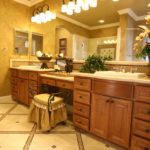Properties lose a considerable amount of heat through their windows. But energy-efficient glazing will help to keep your home warm, quiet, and reduce your monthly energy bills. This 
Windows and doors have a considerable impact on heat loss, so any measures that you can take to prevent heat loss are worthwhile and will lower your energy bills significantly.
The advantages of energy-efficient windows
- Lower energy bills: replacing any single glazed windows with B rated double glazing windows can save you around $240 a year on your bills.
- Less carbon footprint: Because you will be using less fuel, you’ll generate lower amounts of the carbon dioxide that contributes to global warming.
- A cozier home: Energy efficient double glazing will reduce heat loss through windows meaning less cold spots and drafts.
- More peace and quiet: Energy efficient windows will insulate your home against any outside noise such as traffic, trains or shouting.
- Reduced levels of condensation: energy-efficient glazing helps to reduce condensation build-up on the inside of windows.
How do energy efficient windows work?

Energy efficient windows are available in a variety of styles, frames and materials. They can vary depending on:
- The amount of sunlight that travels through the glass.
- How well they prevent heat from passing through the window.
- The amount of air that is allowed to leak in and around the window.
What to keep an eye out for
- The glass: The most energy efficient glass to use for double glazing is Low-E glass. This often has a hidden coating of metal oxide, usually located on one of the internal panes parallel to the gap. This allows light and heat to come in and cuts the amount of that is let out.
In between the window: The more efficient windows will use gases such as xenon, krypton and argon in the gap between the glass sheets.
Pane spacers: These are normally used around the inside edges to separate the two panes of glass. For the highest levels of efficiency, look for pane spacers that contain little or no metal, these are often referred to as ‘warm edge’ spacers.
Frame materials
All of the following frame materials have windows available in all energy ratings.
- Wooden frames tend to have a lower impact on the environment, but require a lot of maintenance.
- UPVC frames have a very long shelf life and can be recycled.
- Aluminum frames are slim and durable, and can also be recycled.
- Composite frames usually have an inner timber frame that is covered with plastic or aluminum. This lowers the maintenance requirements and ensures the frame is weatherproof.
This is a guest post by David at Leekes, an award winning family owned retailer of Conservatories, Windows and Doors






